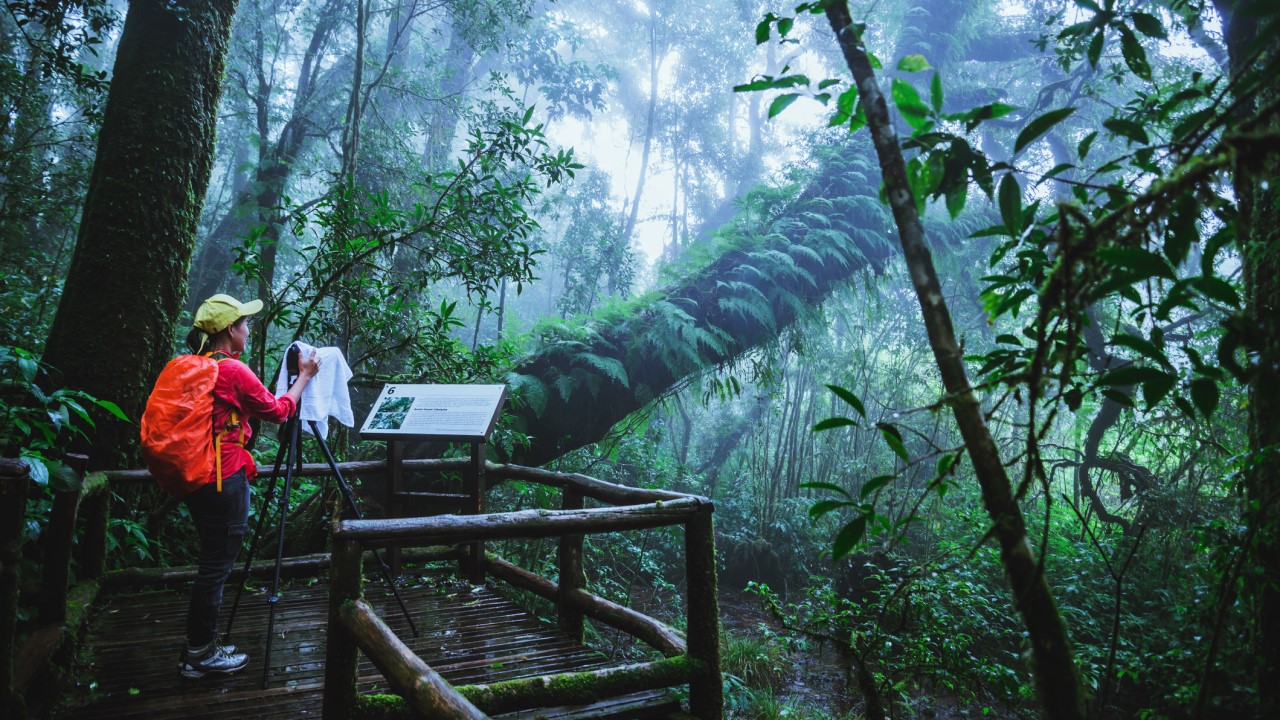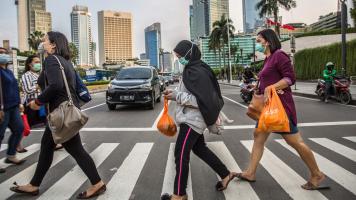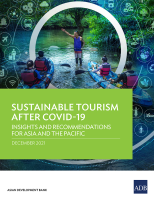
ASEAN has been trying to make tourism more sustainable noting that poorly planned and managed tourism has proven to have negative impacts on the host communities and their environment. Photo credit: iStock/last19.
While the pandemic has upended tourism in Southeast Asia, it also offers a unique opportunity for the industry to build back greener.
Tourism has been both a boon and bane to Southeast Asia.
Thanks to Southeast Asia receiving 137 million international visitors and close to 1 billion domestic trips in 2019, tourism contributed 12.1% to the region’s gross domestic product (GDP) and employed 42 million workers, most of whom are women working for small and medium-sized enterprises supplying goods or services to the sector.
But rapid tourism growth can also degrade the environment. For example, Boracay island in the Philippines saw tourist arrivals increase 160% between 2011 and 2017 but sewer and waste management systems were unable to keep up. Most commercial establishments and residences improperly treated wastewater and solid waste was poorly managed. As a result, in 2018, Boracay was temporarily closed to visitors for about 6 months for environmental rehabilitation.
Tourism also takes its toll on water and energy resources. A study that looked at the total energy and water consumption of domestic tourism in the Philippines showed consumption tripling between 2012 and 2019. Energy consumption stood at 14,470 kilotons of oil equivalent (KTOE) in 2012 and 44,896 KTOE in 2019, while domestic tourism consumed 3,852 cubic meters of water in 2012 and 11,953 cubic meters in 2019.
The Association of Southeast Asian Nations (ASEAN) has been trying to make tourism more sustainable, noting that poorly planned and managed tourism has proven to have negative impacts on host communities and the environment. Shifting to more sustainable forms of tourism is in fact part of the ASEAN Tourism Strategic Plans for 2011–2015 and for 2016–2025. It is also among the broad strategies under the ASEAN Comprehensive Recovery Framework Implementation Plan, the grouping’s “exit strategy” from the pandemic.
Pre-COVID-19 forecasts suggested international visitor arrivals in Southeast Asia would continue growing by 4%–5% per year and exceed 188 million by 2030, with corresponding percentage increases in tourism spending and employment.
While the pandemic has upended tourism in Southeast Asia, with international arrivals plunging 82% in 2020, it also offers a unique opportunity for the industry to reinvent itself and build back better.
But building a more sustainable tourism sector is fraught with challenges.
Finding a consensus on what sustainability entails
Steven Schipani, principal tourism industry specialist at the Southeast Asia Department of the Asian Development Bank (ADB), said one of the biggest challenges facing the region is getting diverse stakeholders to agree on a common vision of what sustainable tourism means for destinations as they start to revive travel. “I think government, the private sector, and other actors need to engage, determine where shared sustainability interests intersect, and work together on common objectives,” he said, noting views differ regarding sustainable travel definitions and how to measure sustainability.
The United Nations World Tourism Organization defines sustainable travel as “tourism that takes full account of its current and future economic, social, and environmental impacts, addressing the needs of visitors, the industry, the environment, and host communities.”
To make the shift, Schipani also underscored the need for greener infrastructure, skilled tourism workers and destination managers, and laws and policies that incentivize people to operate their businesses more sustainably.
Targeting digital nomads
Since the pandemic, Schipani noted a shift in preference among many visitors to stay longer in destinations, where they can also work remotely. He stressed countries should consider targeting this type of tourist because they tend to spend more on locally produced goods and services, which has positive economic knock-on effects.
Increasing the availability and consumption of local products by fewer but longer-staying visitors can also shorten supply chains and reduce negative environmental externalities—two critical factors for building destination resilience and sustainability.
Vacation home rental business Airbnb has seen this trend in the first quarter of 2021, noting long stays or rentals lasting 28 nights or longer make up almost 25% of total bookings versus just 14% in 2019.
Schipani said governments should prepare for this market shift with regulatory frameworks that enable businesses to cater to these so-called digital nomads. Visa policies that accommodate these travelers should also be in place, as well as the digital infrastructure needed to ensure they have reliable internet access.
Attracting talented workers
With the industry losing many of its skilled workers due to the pandemic, there is a need to attract talent back to the sector, he also said.
An ADB publication highlighted skilled labor shortages are a problem across Asia and the Pacific. Citing a skills survey across the Asia–Pacific Economic Cooperation countries, the report noted that in developing economies, almost 80% of respondents perceived a major or moderate shortage in soft skills and about 75% in managerial skills. The gap in digital and ICT skills was smaller because recent graduates are typically digitally savvy given high rates of internet penetration and smartphone use.
The report proposed more training programs and to integrate sustainability considerations into hospitality and similar curricula. Businesses should also be incentivized to train and retain employees. For instance, this could include tax relief to firms that invest in human capital development, funding for employer-based skills training and supporting programs that improve worker safety and engagement.
ADB assistance to developing member countries
Schipani said ADB is assisting its developing member countries make tourism more sustainable and inclusive by financing climate-resilient urban and transport infrastructure. Modernizing public infrastructure facilities helps secondary towns improve waste management and facilitates the movement of tourists from gateway to secondary destinations. This integrated approach also helps avoid overcrowding in popular destinations and more widely disperses tourism benefits.
ADB supports capacity building for tourism destination managers, both in the public and private sectors, so they can develop appropriate tourism management plans and systems. ADB also supports industry-relevant education and training programs to better ensure a competitive workforce and promote women’s attainment of leadership roles in the tourism and hospitality sector.
With tourism seen key to the region's recovery, ADB has just launched the Southeast Asia Sustainable Tourism Hub to help countries develop and finance innovative tourism projects, build destination management capacity, and provide knowledge solutions that align with the ADB Strategy 2030 and the Sustainable Development Goals.
Shifting to sustainable tourism was one of the topics discussed during #SEADS2022. Watch recordings.


